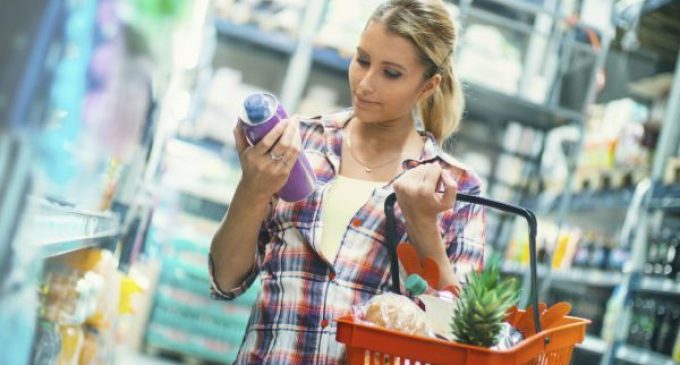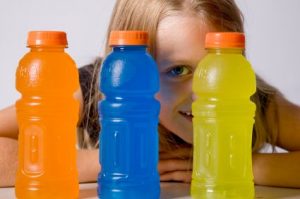Mintel Reveals Seven Key European Consumer Trends For 2017

The key trends and products set to make an impact on consumer mindsets in the coming year have been revealed by Mintel, which highlights the seven key consumer trends set to impact Europe in 2017. Mintel’s Senior Trend Consultant Richard Cope and Manager of Trends Catherine Cottney discuss the European consumer trends set to impact the market in 2017, including implications for both consumers and brands.
The Sweet Hereafter
The UK is the latest country to declare a sugar tax, signifying a growing challenge for European brands: namely how to deliver the future of sweetness going forward.
Richard Cope, Senior Trend Consultant, says: “Ahead of the UK’s April 2018 sugar tax, international soft drinks brands are already scrambling to reformulate and innovate. Mintel research reveals that sugar’s bad press is already impacting on behaviour across Europe, with more than six in ten Polish (63%) and Spanish (63%) consumers telling us that they are actively reducing their consumption of, or are actively avoiding, sugary foods. This is followed by 60% of Italian consumers, 55% of French and 54% of German consumers. Rather than contest the legislation, carbonated soft drinks will continue to downsize can and bottle sizes and reformulate with non-sugar alternatives. 100% fruit or milk based drinks will not be impacted, so can be expected to compete more strongly by not having to hike up their prices, regardless of their sugar content. However, there is the possibility that some of the afflicted carbonated soft drink brands might start aggressively comparing their reformulated, reduced sugar options with the levels of intrinsic sugar in the untreated milk and fruit juice products of those rivals that are exempt from the tax.”
 “Other brands are faced with stark choices of taking a hit on more expensive sugary drinks, developing more artificially sweetened lines or testing the public taste buds with drinks that are simply less sweet in taste. It’s also going to prove difficult for brands to play the “natural” card when pushing alternatives, because plant-based sweetening ingredients like stevia leaves have to be processed. When it comes to “natural” it’s more likely that brands will look to profit from the simplicity of their bottled water lines.”
“Other brands are faced with stark choices of taking a hit on more expensive sugary drinks, developing more artificially sweetened lines or testing the public taste buds with drinks that are simply less sweet in taste. It’s also going to prove difficult for brands to play the “natural” card when pushing alternatives, because plant-based sweetening ingredients like stevia leaves have to be processed. When it comes to “natural” it’s more likely that brands will look to profit from the simplicity of their bottled water lines.”
“It remains to be seen what consumers will respond most strongly to: price hikes or general bad press around sugar. Mintel’s research reveals that around half (53%) of UK carbonated soft drink users claim they would either cut back on or stop drinking sugary carbonated soft drinks if the price were to increase by 24p a litre as a result of the sugar tax. Growing awareness of the cost of obesity to society threatens a tipping point where consumers eschew personal freedoms in favour of a sin tax, where sugar becomes ‘the new tobacco’. The fear for brands is the latter scenario and if this tax is perceived to be successful in that regard, similar legislation will be applied to other categories – baked goods and highly calorific coffees for example – and other countries, whether or not they are part of any trade union. The potential challenge for manufacturers of cakes, biscuits, sweets and ice cream would be far greater, because sugar is fundamental not just to taste but also to providing texture and bulk.” Richard continues.
Ascending Africa
Africa’s rising GDP and improving infrastructure are making it an increasingly credible and powerful trading partner and Europe will start to buy into and reach out to the benefits of Africa’s growing middle class and rapidly improving connectivity.
Richard Cope, Senior Trend Consultant, says: “In 2017, Europe will start to buy in and reach out to the benefits of Africa’s growing middle class and rapidly improving connectivity, which is helping people access credit to start up their own businesses. A host of factors are raising Africa’s prospects, including its youthfulness, its growing independence and burgeoning middle class.”
“We are already witnessing a growing interest in African produce. Indeed, according to Mintel’s Global New Products Database (GNPD) between 2011 and 2015 the percentage of food and drink products launched globally containing an African ingredient increased by 41%. The majority of food and drink brands have launched ranges catering for – or nuanced towards – the African market. To succeed among the African middle classes, more and more will seek authenticity and affection by raising levels of local sourcing and employment. Other African ingredients and products have huge potential across Europe, from low or gluten–free ancient grains like sorghum and einkorn, to rose-infused nougats and jams, to authentic gourmet Tanzanian chocolate, Ethiopian Tella beer and chickpea and plantain snacks, some of which are already finding their way onto the market.”
“In beauty and personal care, other more familiar African beauty products have the potential to crossover in authentic form too, including black soap made from the ash of locally harvested plants and barks such as plantain, cocoa pods, palm tree leaves and shea butter made from the fat of shea tree nuts. While in retail, brands can seek to tap into the emergent African middle class market but must pay heed to religious sensitivities and a growing desire for patriotic purchasing, embodied by movements like #BuyNigerian. For technology brands, Africa is becoming a key focus of educational aid – from free connectivity to coding schools.”
“Without denying Africa’s many challenges, its youthfulness, growing connectivity and economic performance can empower it to trade and put it front of mind for Europeans. What’s more, its indigenous products are poised to deliver a winning combination of authenticity, provenance and exoticism across food and drink, fashion and beauty. If African exporters and brands can successfully mobilise, there is strong potential to appeal to youthful, premium, artisan and ethical European markets in food and beauty,” adds Cope.
Airpocalypse Now
Air pollution is harming us right now and consumers will start investing more in pollution protection products, whilst brands endeavour to be part of the solution, not the problem.
Richard Cope, Senior Trend Consultant, comments: “Consumers are wising up to the killer in their midst – air pollution. In 2017 and beyond, expect to see European consumers take a lead from China with their interest in pollution protection products. Mintel research reveals high ownership of masks (83%) and air purifiers (56%) in China, indicating that protection against pollution is a major concern. Using houseplants (52%) and air quality index monitoring (33%) to counter pollution is also commonplace behaviour.”
“One of the conditions of the Paris Climate summit was for countries to submit an audit of their progress as soon as 2018. Ahead of this first statistical stocktake, European governments will start implementing some of the actions called for by the Paris climate summit. This will include ‘urban greening’ plantation programmes, clamping down on older vehicles and incentivising e-cars and construction programmes using building materials that chemically counter pollution.”
“Beauty brands are already at the vanguard of the pollution protection industry and we can expect an increase in product claims, as well as more campaigns that show just how bad pollution is for hair and skin. Pollution concern already runs high across Europe. In France, 41% of consumers agree that the environment – for example pollution – affects skin, followed by 37% in Italy, 35% in Germany and 28% Spain. In food and drink, we’ll see ‘eat yourself clean’ concepts with brands positioning superfoods as immunity boosters, as well as others championing their pure sourcing from unpolluted areas, which is standard for bottled waters, but is beginning to emerge in sectors like fish and meat. Sustainable and ethical fashion is mainstreaming at a specialist and mass level, in 2017 and beyond we can expect brands to expand on their first forays into recycled ocean plastic clothing and footwear.”
“The re-evaluation of pollution as a here-and-now reality, rather than some threat distant in time and place, will see consumers invest in health protection products, as well as support brands that are innovating to change things for the better,” concludes Cope.
Cultural Social Responsibility
Public funding in Europe is in crisis, and yet the region contains the highest number of UNESCO World Heritage sites. Brands are stepping in to fund restoration and repair work.
Catherine Cottney, Manager of Trends, says: “As austerity bites and the cost of conserving, renovating and paying for the general upkeep of cultural monuments and institutions increases, we’re seeing brands get more involved in funding or sponsoring maintenance and preservation.”
“From a brand point of view, lack of funding is creating an opportunity to tap into current feelings of nationalism in a positive and non-divisive way. This enables companies to transcend national boundaries by supporting causes across different markets and get involved in a more tangible way in local communities – by becoming part of the fabric of that area. Mintel’s research reveals that 20% of UK consumers think that big national brands or chains should play a bigger role in local communities. These kind of sponsorships and their tangible benefits also sidestep some of the consumer cynicism directed towards some ‘green’ corporate campaigns that feel like exercises in economising. However, transparency will still be key as Mintel finds 52% of UK consumers say that they will only pay more for ethical products if they know where the extra money goes.”
“In 2017, we will see food and drink and foodservice companies restore – or move into – historic food trading or manufacturing venues associated with their brand. There’s an opportunity for clothing and footwear as well as leisure and entertainment brands associated with certain leisure activities to rejuvenate or update facilities that have fallen into disrepair. This new era of CSR will see brands continue to use their clout to help improve the quality of life for citizens while also safeguarding important cultural icons for future generations. This can improve community relations as citizens can clearly see how a brand is using its influence to affect change while also reducing the pressure on governments.” Catherine continues.
Right Here, Right Now
Brands are using new technology to help consumers decide what to buy, watch, do or eat, based upon pending timeframes from the next 30 minutes to the next 48 hours.
Catherine Cottney, Manager of Trends, says: “Pokémon Go’s widespread popularity, coupled with further improvements in geo-location and beacon technology, will have a knock-on effect on how people interact with their immediate surroundings and how they search for things to do and buy in any given moment. Beacon technology is becoming more powerful and pervasive and it seems consumers can see the benefits of engaging with this type of technology. Indeed, in the UK, 29% of Millennials would be happy to share their real time location with brands they like in order to receive nearby offers.”
 “In retail, discounting has become so ubiquitous and constant through ‘brand match’ initiatives that it has lost all meaning. But there is an opportunity to inject some urgency and some playfulness into promotional activity beyond diarised Black Friday or Amazon Prime campaigns. Retailers can introduce ‘happy hours’ and countdown discounts in response to everything from the weather to political or cultural events to engage consumers through some unscheduled serendipity. This has the potential to appeal to the 27% of UK consumers, 21% of Spanish, 20% of Italian,13% German and 12% of French consumers who have bought luxury branded items in the past 18 months and would be interested in smartphone marketing relevant to them and their location at the time. And this isn’t limited to the physical world. Unfettered access to the internet has meant that people have any number of review sites at their fingertips, but this can be crippling. In order to free people up, we will see websites introduce more time-focused frameworks or offers that can reduce the amount of research that can be done before a decision needs to be made.”
“In retail, discounting has become so ubiquitous and constant through ‘brand match’ initiatives that it has lost all meaning. But there is an opportunity to inject some urgency and some playfulness into promotional activity beyond diarised Black Friday or Amazon Prime campaigns. Retailers can introduce ‘happy hours’ and countdown discounts in response to everything from the weather to political or cultural events to engage consumers through some unscheduled serendipity. This has the potential to appeal to the 27% of UK consumers, 21% of Spanish, 20% of Italian,13% German and 12% of French consumers who have bought luxury branded items in the past 18 months and would be interested in smartphone marketing relevant to them and their location at the time. And this isn’t limited to the physical world. Unfettered access to the internet has meant that people have any number of review sites at their fingertips, but this can be crippling. In order to free people up, we will see websites introduce more time-focused frameworks or offers that can reduce the amount of research that can be done before a decision needs to be made.”
“Time will be a key issue for brands in 2017 and we’ll see a growing demand for services and platforms that can help people organise and make better use of their leisure time via new geo-location technology or an increased emphasis on highlighting the time it takes to engage with a brand’s product or service,” continues Cottney.
Seamless Spending
Thanks to the simplicity and convenience they offer, people are embracing new payment methods such as contactless cards, smartphones and wearables in record numbers.
Catherine Cottney, Manager of Trends, says: “Growing consumer confidence in technology born of familiarity, along with technological advances and product launches will increase adoption of new payment methods. Already, 30% of UK consumers feel comfortable about the potential for a completely cashless society, while 29% say that it is more convenient to pay for things using a smartphone than other payment methods.”
In 2017, we will see mobile payment schemes gain greater traction. We will also see existing wearables expand to incorporate payment capabilities. There will be a growing focus on increasing the spending threshold too and retailers will continue to roll out their own smartphone payment applications. Indeed, in retail, businesses that create their own payment schemes will theoretically be able to pass on debit and credit card transaction fee savings in the form of loyalty-boosting discounts to their customers. Meanwhile, cash-free foodservice outlets that have been kitted out with pre-ordering facilities and self-service kiosks, will become more common.”
“In 2017, the process of paying will become so efficient that it will become second nature to quickly swipe a card, smartphone or wearable to complete a purchase. With the practicalities of paying streamlined, possibilities will be opened up for brands and retailers to focus more on creating a more unique shopping or eating experience for their customers. There are concerns that, as hard cash fades away, this new simplicity might also encourage recklessness in spending, but a host of real time tracking apps should actually allow people to better control and analyse their spending,” adds Cottney.
Talking Shop
Brands are utilising platforms like Snapchat, WhatsApp and Facebook Messenger to instantly connect with consumers and offer superior levels of customer service.
Catherine Cottney, Manager of Trends, says: “Social media platforms are growing in popularity as secure and trustworthy communication channels connecting brands and consumers. Mintel research highlights the extent of their popularity, as in Italy, 59% of consumers say they would like to be able to contact customer service through an instant messenger, while in the UK, 27% of consumers say they would find it useful if they could contact brands via messaging apps such as WhatsApp. And in Germany, a quarter (24%) of consumers say they would like to be able to use an instant messenger service to contact a customer advisor online. As the software that powers platforms improves and becomes more nuanced, these forms of communication will mainstream in the customer service sector and we’ll see people increasingly speak to brands as easily and as informally as they would with their friends.”
“In retail, brands will be able to instantly deal with complaints and queries using these new forms of technology rather than relying on manned social media platforms. However, this may come at a cost as customer expectation will be raised to new heights. In financial services, we’ll see a growth in insurance companies and banks offering chatbots and customer service via messaging apps, as well as opportunities to add credit or make transactions. As people start to use these platforms for all their purchases and communications, platforms will help users better manage their money.”
“In 2017, we will see social media platforms become an essential part of everyday life for users. Beyond being used for their original purpose – to connect users to their friends and family – they will develop to allow users to complete a wide range of activities without having to log off or navigate away from the site. For consumers, this will be convenience nirvana, as they will have unprecedented access to official brand channels. For brands, it will give them an opportunity to nurture closer, more private customer relationships and dialogues through social media but it may also pose some major new challenges as they seek to ensure they can realistically offer constant and reliable communication,” concludes Cottney.
































